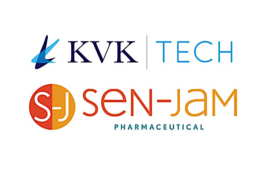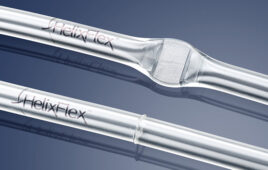Upstream Bioprocessing
Upstream bioprocessing, within the last 10 years, has been converted to a single-use disposable product rather than a housing that would be need to be regularly cleaned. The issue with single-use bioprocessing is that most systems will have a bottleneck at the chromatography column. This has created the largest issue for upstream single-use conversion within pharmaceutical processing. Manufacturers have been working to fix this issue in recent years and once they are able to get over the bottleneck hurdle, the focus will shift from upstream to almost entirely focusing on downstream single-use bioprocessing conversion.
Downstream Bioprocessing
The problem that plants are seeing is that, while they might be successful in using single-use for upstream bioprocessing, they are trying to do too much conversion at once. This comes from the plants wanting to switch from batch to continuous processing. The solution is if manufacturers can create a large enough system that can handle the continuous running process and is able to be changed easily.
If manufacturers can switch to a continuous process, they will inevitably need filtration that is going to be able to handle the large-scale projects that come along with the machinery.
Benefits of Single-Use
The initial benefit that is always pointed out with single-use pharmaceutical bioprocessing is the ability to keep the processing area clean at all times. Single-use bioprocessing allows for tanks to remain clean and for water to be saved. Water is typically used the most around bioprocessing plants for cleaning, no matter the protocol that is involved. By allowing the plant to utilize single-use processing components, manufacturers are saving water along with the time and money that is typically spent on cleaning costs.
Another benefit of single-use bioprocessing is that it almost eliminates any contamination issues. By getting rid of the processing components after each batch is created, there is a significantly less chance of chemicals mixing with ones that should not be combined. This is also a cost saving aspect for manufacturers because by using single-use bioprocessing, they are able to guarantee that a larger portion of the final product will be usable and up to the standard of the plant. Contamination costs can be extremely detrimental, especially when plants do not realize that contamination is happening and they continue to run the systems only to realize that the product being produced cannot be used. So switching to using a single-use bioprocessing system is preferred among many manufacturers.
Finally, the issue of testing for contamination is another benefit that comes with single-use bioprocessing products. Once a plant realizes that there has been a contamination somewhere in the bioprocessing line, the plant needs to shut down production and send off samples to the lab. The lab then takes the samples and needs to test them in order to figure out where the contamination happened and how much product has been contaminated. Labs use light scattering lasers to see when a solvent is no longer present in a water stream, thus showing when the contamination period is over and production can begin again. This process of testing contaminated water and product can take a long time, especially when you begin to look at the impact of a plant being shut down for a single day and stretch that number across weeks or even months (depending on the size and scope of the contamination).
Challenges to Single-Use
While single-use bioprocessing technology can provide a number of benefits, they also have challenges that can be on a much larger scale when used in a commercial scale. Pressure tends to be the number one disadvantage when looking at single-use bioprocessing product trends. Because most of the single-use or disposable containers are made out of plastic, it is nearly impossible to use high-pressured instruments in the production process line. And because many bioprocessing plants are used to using high-pressured instruments in the production, this can cause an issue when switching over to a single-use system. Managing single-use disposables is one of the most prominent concerns when manufacturers make the switch in processing equipment.
Moving from Batch to Continuous Bioprocessing
Many bioprocessing plants will have a room filled with hundreds of bioreactors that will be running on single-use upstream systems. But what often happens in this type of situation is that the manufacturers take what they deem as useful product from the batch and then reload and restart the system for another round of processing. What would be most useful is if a bioprocessing plant could implement a much larger bioreactor that would be similar in size to ones seen in refineries. Larger bioreactors would be able to be fed a constant stream of chemicals and it would keep working to continuously make the product. This is the ideal situation that pharmaceutical manufacturers are trying to get to.
Another advancement that has happened within the last two years has been the use of tangential flow filtration (TFF) systems that have become commercially available. Companies that purchase these systems can move closer to a bioprocessing system that is continuous. The tangential flow filtration systems can be combined with other various downstream unit operations to create a continuous manufacturing unit. The need to have a single-use technology for continuous bioprocessing is due to the fact that downstream throughput needs to increase to match the much higher achieving upstream systems.
Conclusion
For the last few years, it has been clear that the majority of research funding is going towards creating a continuous bioprocessing unit through the implementation of a single-use system. The challenges that are faced by the companies that manufacture single-use systems are that the downstream process needs to be able to achieve the results currently experienced during upstream process. The tangential flow filtration systems are a temporary fix to the complex issue. Once systems are able to reach the same output for upstream and downstream, companies will then see more opportunities for continuous bioprocessing.
About Valin Corporation
Valin Corporation is a technical solutions provider for the technology, energy, life sciences, natural resources, and transportation industries. Valin offers personalized order management, on-site field support, comprehensive training, and applied expert engineering services utilizing automation, fluid management, precision measurement, process heating, filtration, and fluid power products. For more information, please visit www.valin.com.
Follow us on Twitter and Facebook for updates on the latest pharmaceutical and biopharmaceutical manufacturing news!




